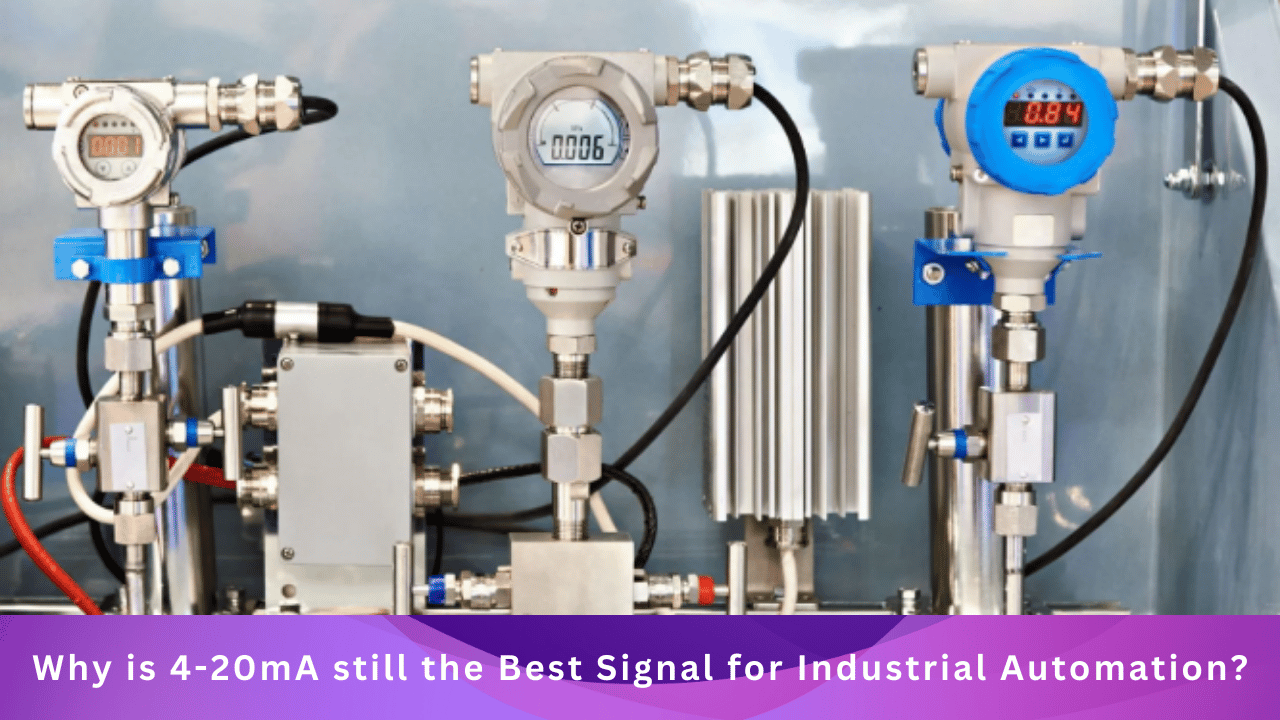Table of Contents
Toggle4-20mA signal is like universal language
If you work in industries like oil & gas, manufacturing, or water treatment, everybody knows 4-20mA signal.
But why is it so popular?
What is a 4-20mA Signal?
- The 4-20mA signal is a way to send information from sensors to control systems.
- Sensors measure parameters like pressure, temperature, or flow and convert this information into an electric current.
- The current varies between 4 milliamps (mA) and 20mA
For example:
4mA = The sensor reads the lowest value (e.g., 0 pressure).
20mA = the sensor reads the highest value (e.g., maximum pressure).
Any value in between represents something in the middle.
Why 4-20mA and Not 0-20mA?
Imagine you are driving a car, and the fuel gauge is stuck at empty. You wouldn’t know if the tank is empty or if the gauge is broken!
Similarly, a 4-20mA signal ensures that even at the lowest measurement, the system receives a current (4mA). This makes it easy to detect if something is wrong, like a broken wire (which would show 0mA).
5 Reasons Why 4-20mA is the Best
- Noise Immunity: Electrical noise from machines can interfere with signals. A 4 to 20mA signal is less affected by noise so gives accurate data transmission over long distances.
- Simple and Reliable: Measuring current (4 to 20mA) is straightforward & it doesn’t weaken over long cables. Voltage signals, like 0-10V, can lose strength due to resistance in wires, but current signals stay strong.
- Fault Detection: 4mA is the starting point. If the system shows 0mA, it is clear there is a fault like a disconnected wire.
- Power Efficiency: Some sensors can be powered directly by the same 4-20mA loop, eliminating the need for extra wiring. This reduces costs and make installations simple.
- Universal Compatibility: Most industrial systems and equipment are designed to work with 4 to 20mA. It’s a universal standard, so you don’t have to worry about compatibility.
A Simple Example:
Think of a water tank. A sensor measures the water level and sends a signal to a control room. If the tank is empty, the current is 4mA. If the tank is full, the current is 20mA.
The control system reads these values and triggers actions, like turning the pump on or off. If the current suddenly drops to 0mA, it’s a warning for the maintenance team to check for a fault.
So,
The 4 to 20mA signal is like the universal language (English) of industrial automation—simple, reliable, and effective. It ensures smooth communication between sensors and control systems
I know everybody worked with 4-20mA systems!


1 Comment